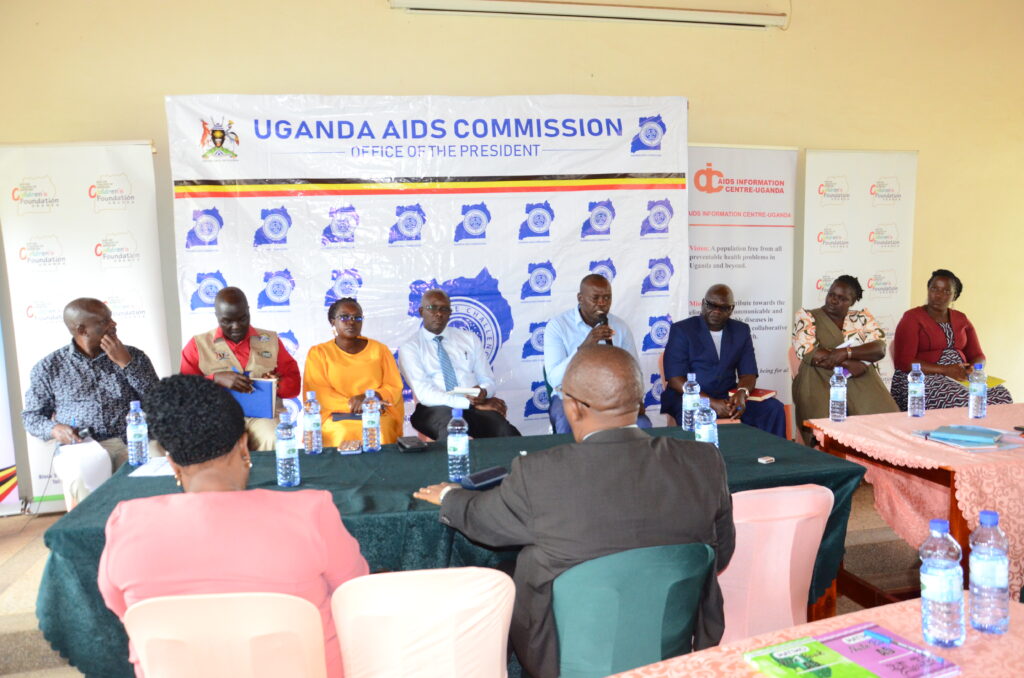An estimated 83,055 people are living with HIV/AIDS in the Bunyoro sub-region, with an HIV prevalence among adults of 5.5%, compared to a national HIV prevalence of 5.2%.
Hoima has the highest HIV prevalence in the region at 6.6%, followed by Masindi at 5.1% and Kagadi districts at 4.6%.
This higher prevalence is attributed to an influx of migrant workers seeking opportunities in the oil and gas sector and a significant number of plantation workers.
Adolescents, particularly girls and young women (AGYW), are especially vulnerable due to these dynamics.
The Uganda Demographic and Health Survey (UDHS) report for 2022 indicates that HIV testing in the region has improved, with about 83% of women having ever tested for HIV, up from 78% in 2016, and 81% of them retesting, up from 70% in 2016.
Experts are concerned about the high prevalence of HIV/AIDS among AGYW, as they will require long-term treatment, which strains services and imposes a financial burden on the country.
A report by Baylor Foundation Uganda, presented at a regional AIDS/HIV stakeholders’ meeting at the Hoima District Local Government offices on May 16, ahead of the International Candle Light Day for 2024, highlighted these challenges.
Dr. Betty Nsangi, a Project Manager at Baylor College of Medicine Children’s Foundation, noted that economic activities attracting young girls and women to sex work contribute to the region’s HIV problem.
By the end of 2023, the number of females on life-saving Anti-Retroviral Therapies (ART) nearly doubled that of males, with 50,166 females and 26,490 males receiving treatment.
Negative cultural practices such as polygamy, subordination of women, widow inheritance, and alcoholism are also hindering efforts to combat HIV/AIDS.
Experts have warned that the Albertine Graben, with its anticipated population increase due to oil extraction activities, may face a worsening HIV situation without adequate health infrastructure, consistent drug supplies, and behavioural interventions.
In remote communities along the Lake Albert shoreline, mobile fishing populations face additional challenges in accessing treatment due to the inaccessibility and unavailability of treatment centers and specialised drugs, which are often unaffordable during stockouts.
Hoima City Mayor Brian Kaboyo calls for increased funding and awareness to prevent overstretching resources and exacerbating the HIV/AIDS crisis.
“In the future, men with substantial financial resources will likely dominate the social scene and attract many young women, potentially increasing the prevalence of HIV,” he said.
Dr. Gerald Asaba, the District Health Officer for Kikuube, emphasised the need for increased intervention capacities to address the evolving landscape and ensure widespread treatment and prevention.
He underscored the importance of reaching the UNAIDS 95-95-95 targets by 2030: 95% of people with HIV knowing their status, 95% on ART, and 95% achieving viral suppression.
Dr. Asaba also advocates for new interventions such as injectable treatments and the oral drug Truvada for pre-exposure prophylaxis (PrEP).
However, he said while these measures are promising, their implementation faces challenges, including adherence difficulties and the need for comprehensive patient education on side effects.
The report highlights that PrEP, effective in providing up to 95% protection when used as directed, has been scaled up in the region from 809 individuals in 2020 to 15,473 in 2023.
Despite this progress, more efforts are needed, such as prevention of mother-to-child transmission (PMTCT), counseling, and assisted partner notification.
Dr. Vincent Bagambe from the Uganda AIDS Commission noted that despite progress, Uganda ranks fifth globally in HIV burden.
The national HIV and AIDS fact sheet of 2022 shows a significant decline in AIDS-related deaths from 48,000 in 2010 to 17,000 in 2022.
Bagambe emphasises the need for sustainable HIV responses using locally generated resources and the mainstreaming of HIV in all sectors.
Milly Babirye Babalanda, Minister in Charge of the Presidency, urged communities to combat negative social practices that increase HIV risk.
She called on local leaders to use government airtime on local radio stations to disseminate accurate information on HIV prevention.
Jaliat Kusiima, Executive Director of Meeting Point, a Hoima-based women founded non-profit organisation focused on community development and impact programmes with emphasis on HIV/AIDS, stressed the need for increased funding for HIV activities in the Albertine Graben.

Jaliat Kusiima
She advocated for more access to PrEP for serodiscordant couples, enhanced advocacy, and targeted interventions to address the high disease burden.



